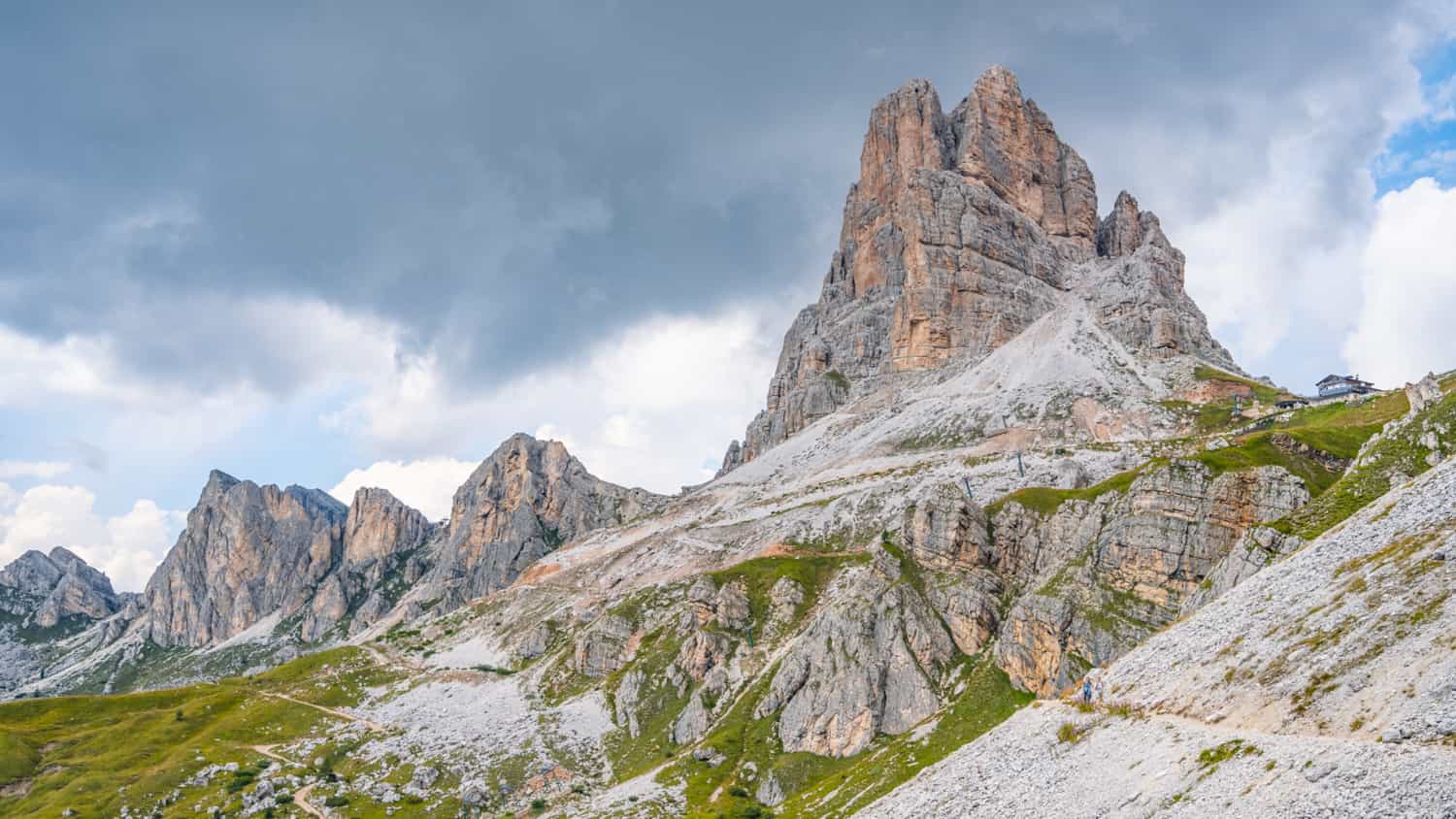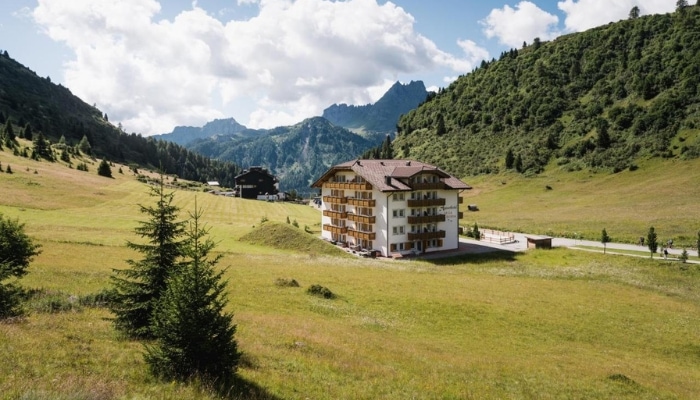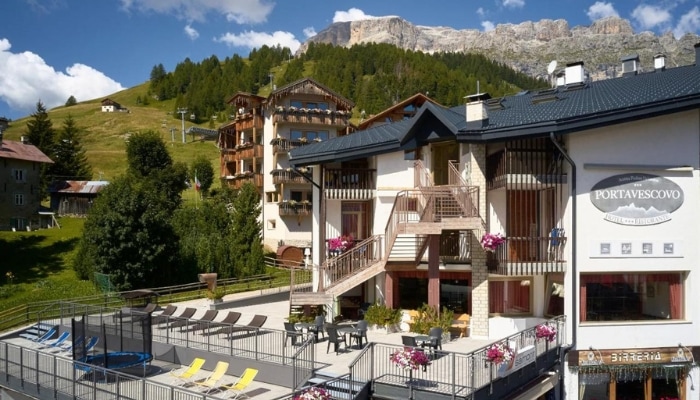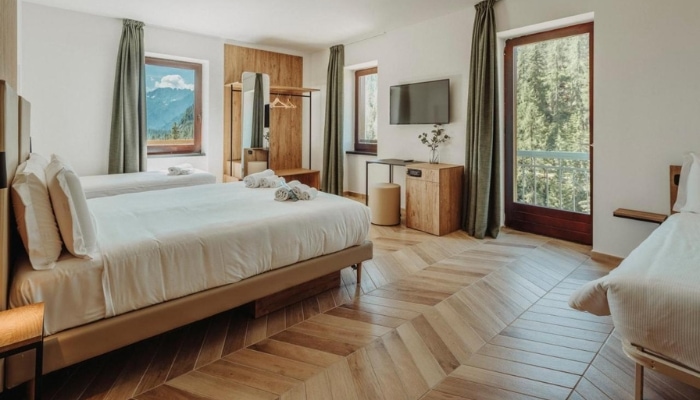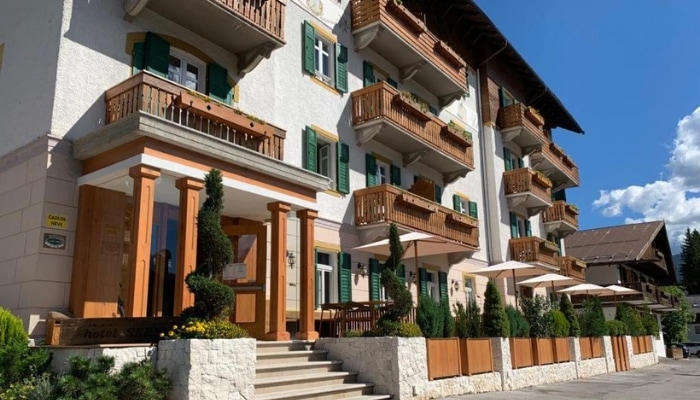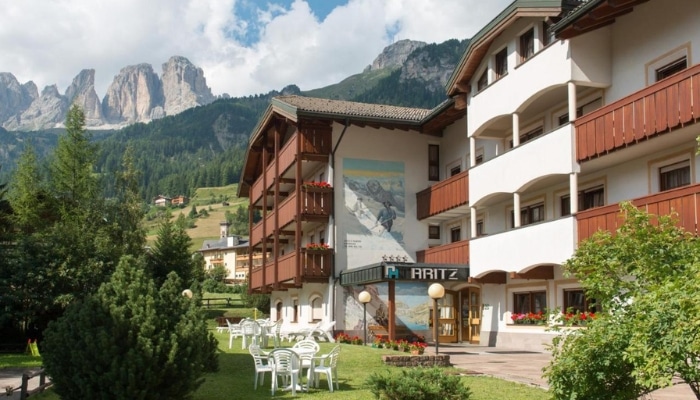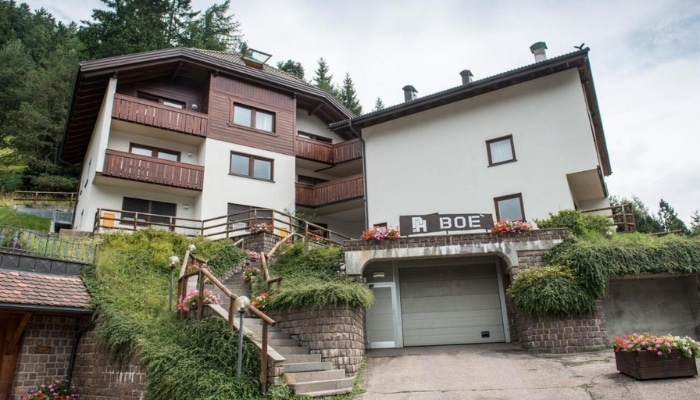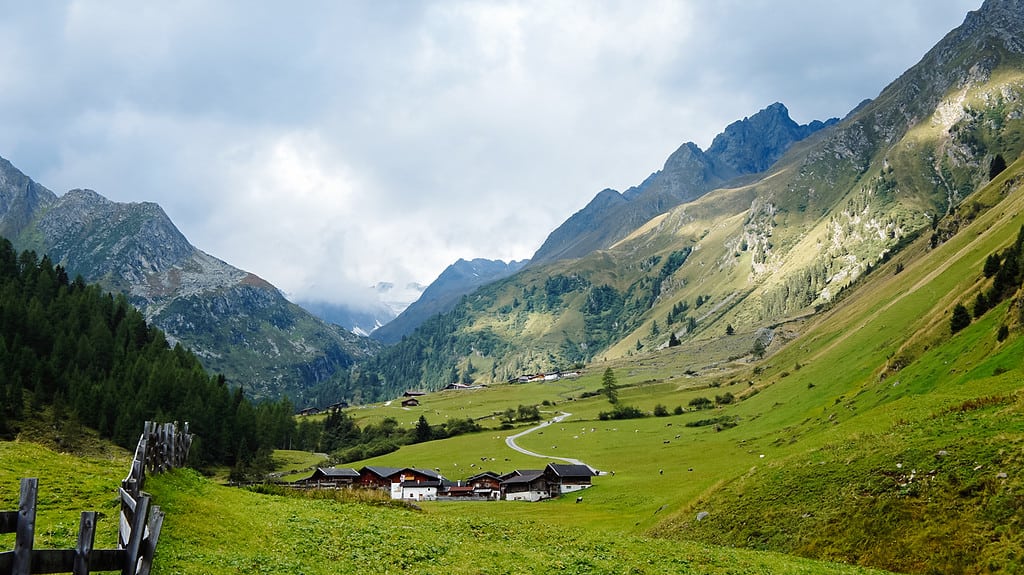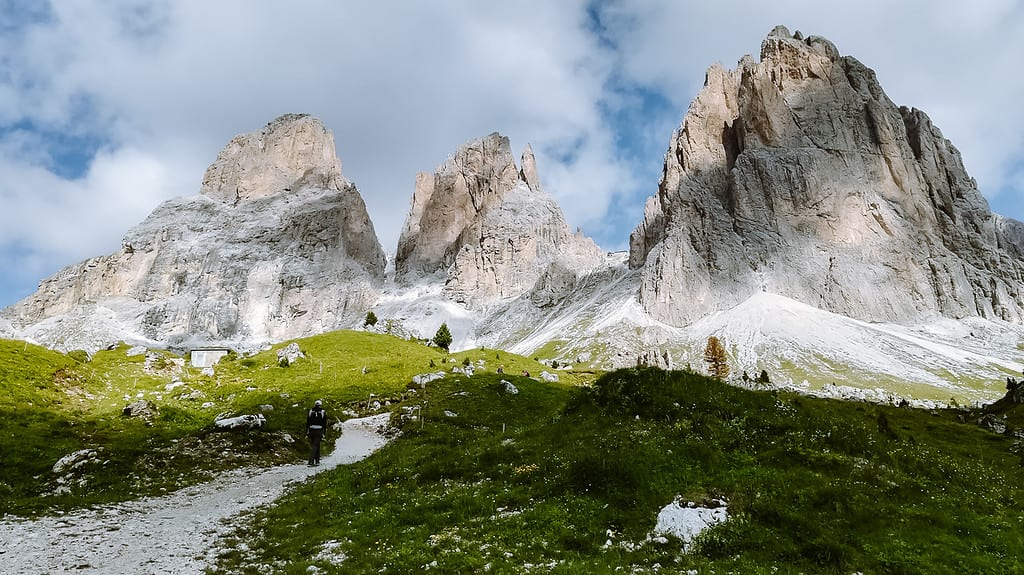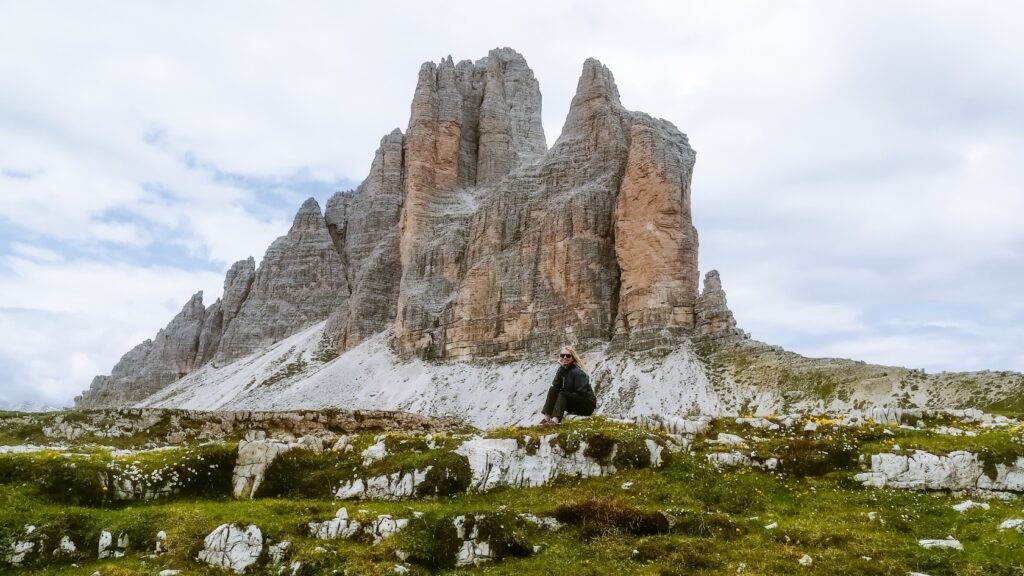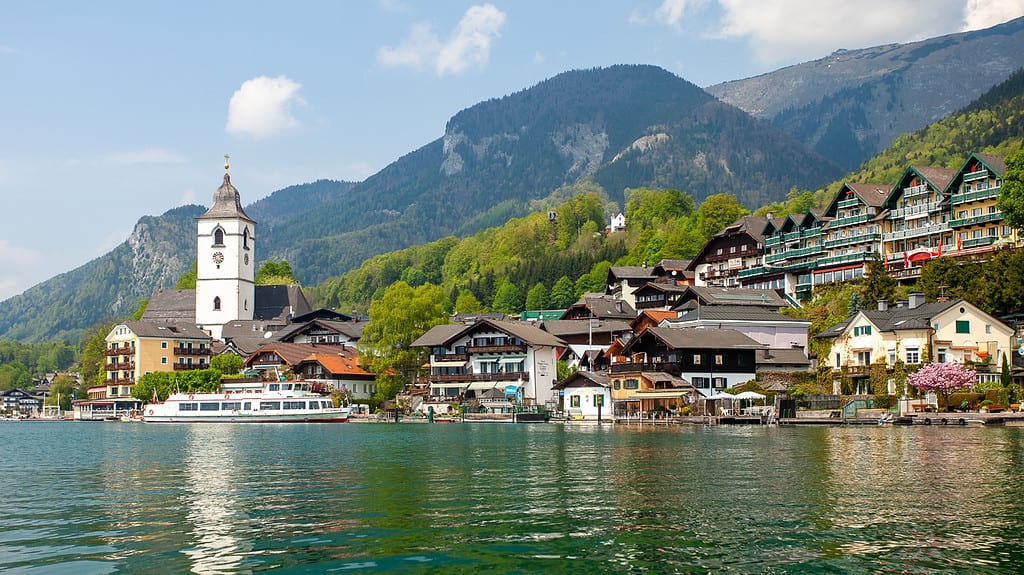A complete tourist guide with tips for the Dolomites, Italy, where you will find everything you need for your trip and holiday in the Dolomites:
- Why visit the Dolomites
- Basic facts about the Dolomites
- Map of the Dolomites
- How to get to the Dolomites
- When to go to the Dolomites
- Prices
- Accommodation
- Food
- Bathing
- What to visit in the Dolomites
- Dolomites with children
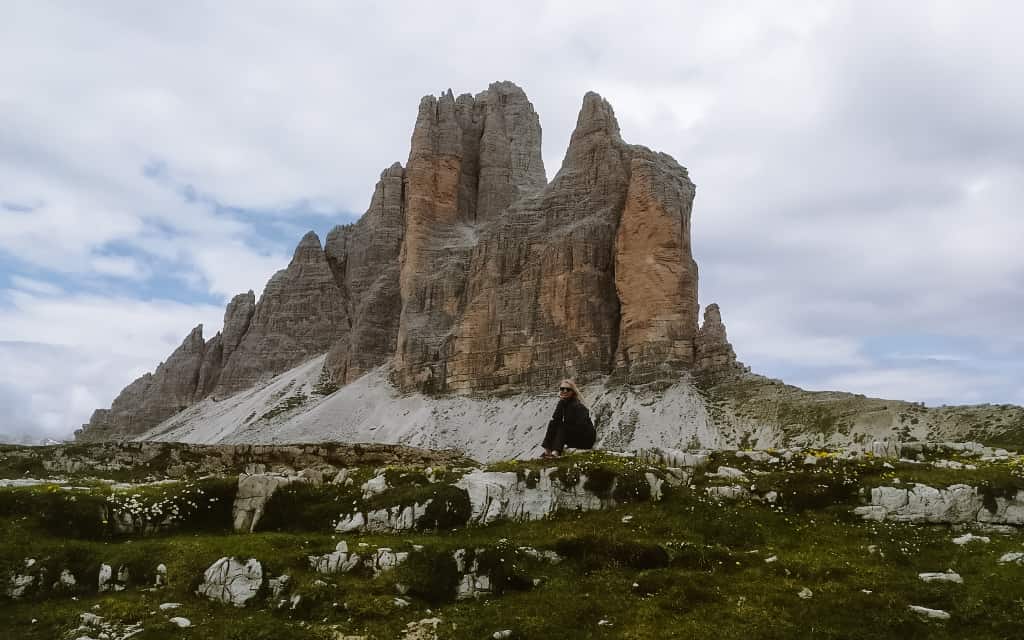
Why visit the Dolomites?
Easy routes, where you can go with children, but also high mountain day hikes, where you can enjoy fantastic views. That’s exactly what the Dolomites are.
The Dolomites are the perfect contrast of sharp limestone peaks and picturesque villages surrounded by green meadows. There is something for everyone – hikers, cyclists, climbers, families with children or motorcyclists who want to enjoy a ride across the iconic passes.
It is the sunniest area in the Alps. You can get vitamin D from the sun for up to 8 days out of 10.
The Dolomites shouldn’t be missed by those with a keen interest in wartime history, as there are significant traces across the mountain range – the Lagazuoi peak with its wartime tunnels, the shooting trenches on Monte Piano or the museum on the Marmolada peak.
Dolomites
The Dolomites are a limestone mountain range in the north-east of the Italian Alps covering 142,000m2. You will find here 18 three-thousanders. The highest peak is Marmolada (3343 m).
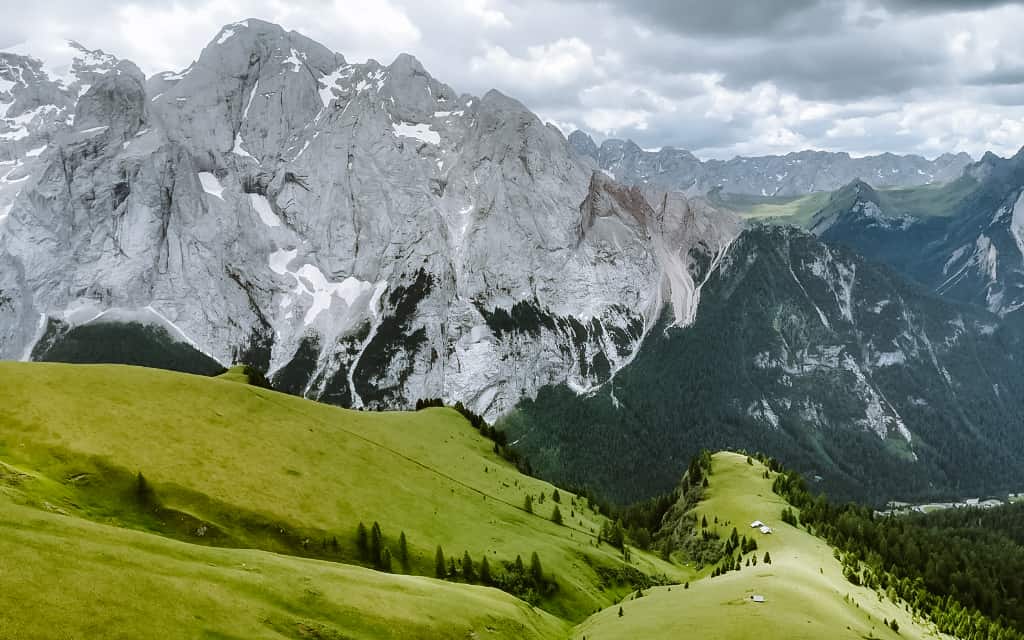
The Dolomites are considered by many to be the most beautiful mountain range due to their distinctive landscape. Spectacular peaks and towers contrast with horizontal surfaces such as ledges, crevices and plateaus. Thanks to the limestone light-coloured rocks combined with extensive green meadows and forests. Some rock formations form a perfect panorama, some stand out suddenly and distinctly from the landscape.
These contrasts and combinations are the perfect picture of the Dolomite landscape. So unique that they have been on the UNESCO list since 2009.
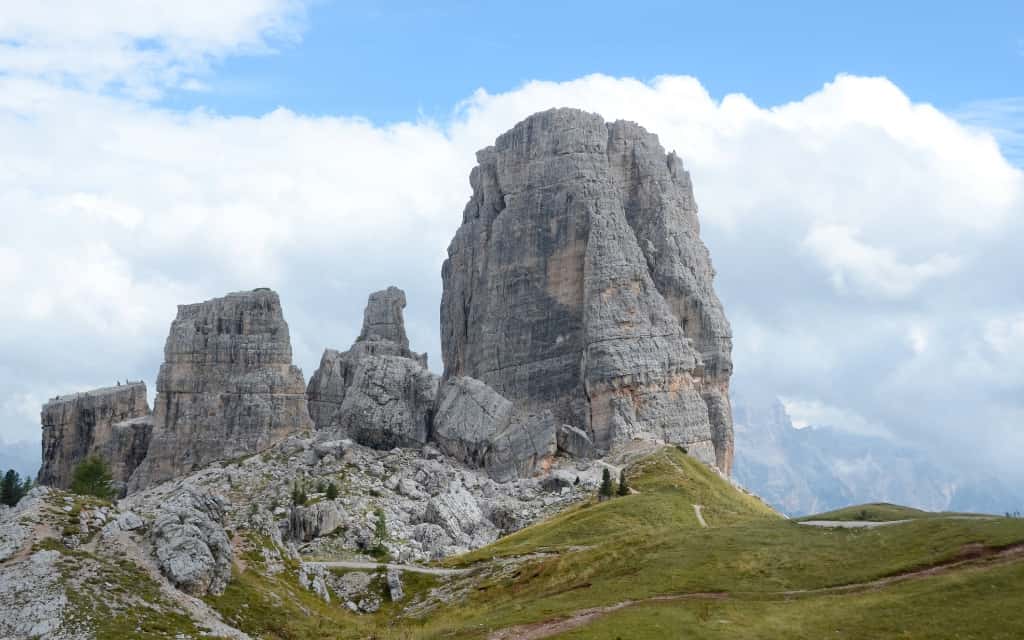
The French mineralogist Déodet Gratet de Dolomieu was the first to come up with the name Dolomites in the 18th century. century, who described the mineral dolomite (dolomitic limestone) from which the mountains are made. Thanks to its light colour, the Dolomites are called the “Pale Mountains”.
Because of their appearance, there are many myths and legends about the Dolomites. One of them is the legend that the mountains got their colour after a moon princess fell in love with the prince of the mountains. When the moon princess was homesick, the prince had the mountains covered with moon silk to make her less homesick.

In the Dolomites you can experience the natural phenomenon of Enrosadira, when the mountain peaks turn different shades of pink, fiery red and purple. Enrosadira comes from the Latin name rosadüra, which translates as pinkening.
Get inspired by our tips on the most beautiful places to visit in the Dolomites (link opens in a new window).
Map of the Dolomites
HOW TO USE THIS MAP: Above you will find a map with places to visit in the Dolomites. Click at the top left of the map to see separate layers with highlighted locations. You can hide and show the different layers or click on the icons on the map to see the names of the places mentioned in the Dolomites guide. If you want to save the map, star it. For a larger version, click on the icon in the upper right corner.
How to get to the Dolomites?
The Dolomites are easily accessible by car and by air. Now let’s take a closer look at both options:
Dolomites by car
A car is the best option to visit the Dolomites. The Dolomites have an excellent network of quality roads that will take you almost anywhere.
Or you can leave your car at your accommodation (many hotels and guesthouses offer free parking) and take the local buses or cable cars. Public transport is convenient and efficient – buses take you to Tre Cime, Lago di Braies, the mountain passes and other beautiful places in the Dolomites.
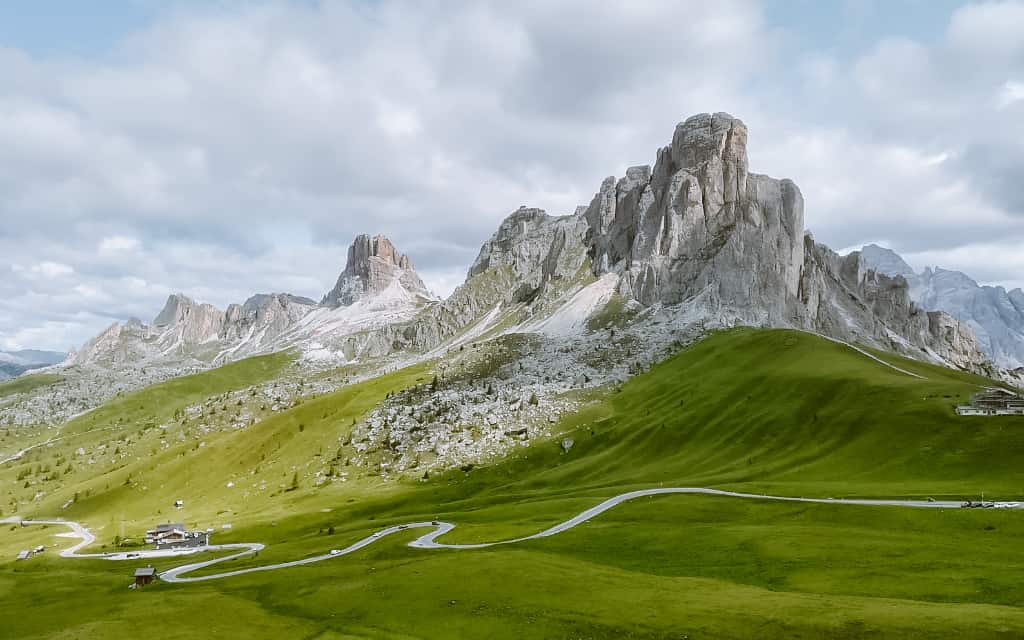
Dolomites by car in 2024
The Dolomites are situated in the north-east of Italy, on the border with Austria. So most of us will go to the Dolomites via Innsbruck. Ultimately, it depends on exactly where you have accommodation, but these are charges you probably can’t avoid:
- Motorway vignette for Austria for €11.50 for 10 days and for motorbikes for €4.60
- Payment of 11 € for crossing the Brenner Pass between Innsbruck and the Austrian-Italian border
- The toll in Italy comes out to about €8-9 per 100 km. You can pay in cash or by card. Each payment gateway has a symbol at the top showing how you can pay. Approximate toll amounts – Cortina d’Ampezzo and Arabba 1,70 € and Ortisei 2,80 €.
The motorway can be conveniently accessed via the SS12 national road, which follows the A22 motorway. However, you have to take into account that you will be driving longer and it is not worth it due to the toll.
Useful links for driving to the Dolomites
The Brenner Pass vignette and payment for Austria can be purchased online in one place. You can calculate the toll here.
Petrol and diesel prices vary from country to country. For current fuel prices, please follow this link.
Follow this link for up-to-date information on traffic in Italy (tolls, closures, etc.). Google maps will also provide you with sufficient information.
By air to the Dolomites
Going to the Dolomites by air is a less common option, but not all of us have a car. In addition, there are several airports around the Dolomites, from where you can then take public transport or rent a car on site.
The nearest airport to the Dolomites is Venice. Just beware that Venice has two airports – Treviso and Marco Polo. Marco Polo Airport is just outside Venice and Treviso Airport is north of Venice, closer to the Dolomites.
Another nearby airport is also near Verona, but not so many companies fly here (you can use flights from London, Paris).
Tip: Right at Venice Airport you can to book a car. I recommend booking well in advance if you want to ensure the best choice at the best prices. Reservations can be cancelled free of charge if necessary (but always double check the information for the specific model).
The Dolomites are 1-2 hours by car from the airport, depending on where you stay. For train connections, visit the Italian Railways website trenitalia.com or take a direct bus to Cortina d’Ampezzo.
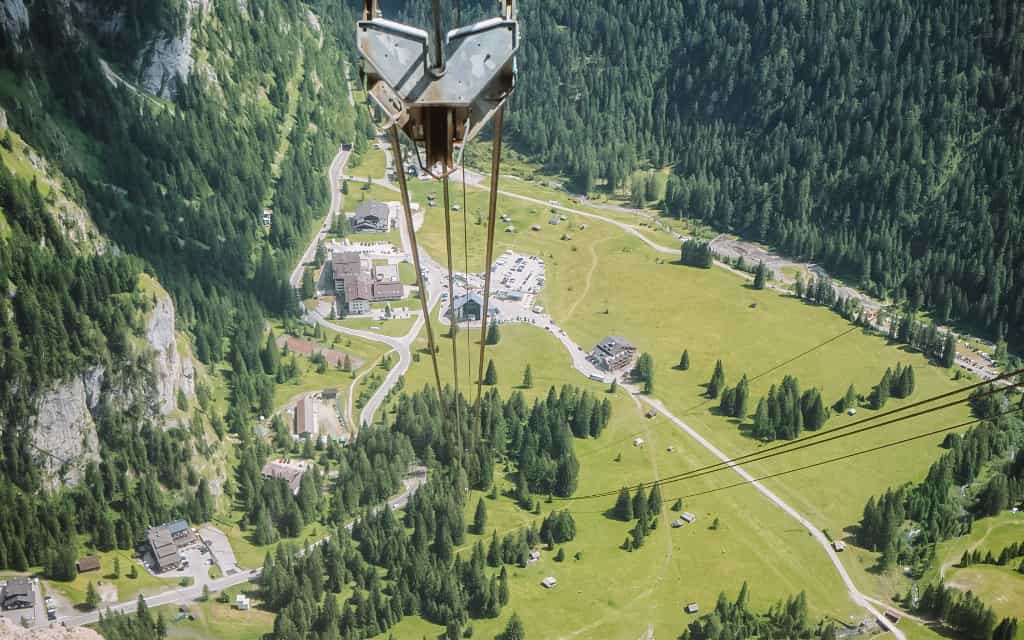
When to go to the Dolomites?
The weather in the Dolomites is generally characterised by cool winters and mild summers with significant temperature fluctuations between day and night. See the weather in the Dolomites throughout the year:
Spring (late April to early June): spring is a beautiful time to visit the Dolomites, as the snow starts to melt and the meadows start to turn green. The weather can be unpredictable, with occasional rain and snow at higher elevations. A lot of mountain huts are closed (they used to open those at lower altitudes). Daily temperatures can range from 10 °C to 20 °C.
Summer (late June to August): summer is the most popular time to visit the Dolomites. The weather is usually warm and sunny, with daytime temperatures ranging from 20°C to 30°C. It is the ideal time for hiking, climbing and cycling, but also the busiest time in terms of crowds.
Autumn (September to October): autumn is another great time to visit the Dolomites, with vibrant autumn colours and cooler temperatures. The weather can be quite variable, with daily temperatures ranging from 10 °C to 20 °C. It’s a great time of year for outdoor activities without the summer crowds.
Winter (November to early April): winter in the Dolomites is known for its excellent skiing and snowboarding conditions. The weather can be very cold, with temperatures often below freezing and heavy snowfall at higher altitudes. The ski resorts are usually open from December to April.
Summer is ideal for hiking, climbing and cycling, while winter is ideal for skiing and snowboarding. Spring and autumn offer milder temperatures and fewer people, making them a great choice for those looking for more tranquillity.
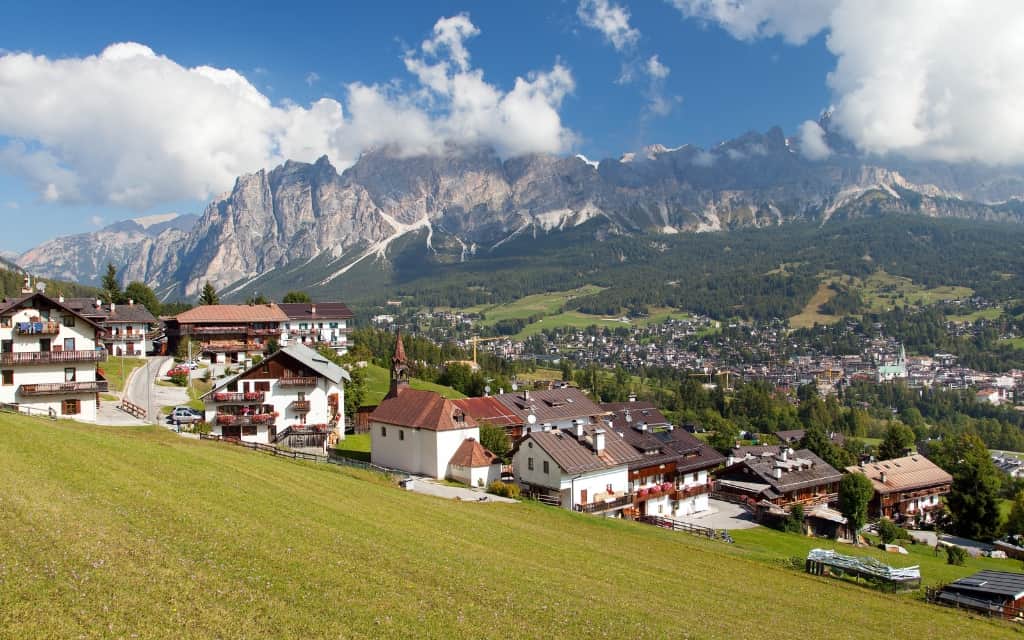
Prices in the Dolomites
Below you will find prices for basic foodstuffs in Bolzano, the nearest large town to the Dolomites:
- Milk 1 l – 1,32 €
- Bread 500 g – 2,85 €
- Rice 1 kg – 2,35 €
- Eggs 12 pcs – 3,11 €
- Cheese 1 kg – 16,88 €
- Chicken breast 1 kg – 10,51 €
- Bananas 1 kg – 1,69 €
- Tomatoes 1 kg – 2,49 €
- Potatoes 1 kg – 1,93 €
- Water 1 l – 0,52 €
How much does a holiday in the Dolomites cost?
Prices in the Dolomites can vary depending on the season and location. Prices may be lower in low season, as well as in less visited areas:
Accommodation:
- Cheap hotels and guesthouses: 50-100 € per night
- Mid-range hotels: 100 to 200 euros per night
- Luxury hotels and resorts: 200 € and more per night
Food:
- Cheap food (e.g. pizza, sandwiches or pasta in a restaurant): 15-20 EUR
- Meals in mid-range restaurants: 20-40 EUR per person
- Higher class restaurants: 50 EUR or more per person
Transportation:
Bus tickets: 2-5 € per ride
Regional train tickets: €5-15, depending on distance
Lifts: 20-50 € per day ticket, depending on the season and area
Dolomites accommodation
The Dolomites are vast and you don’t get a chance to drive through them all in one visit. I recommend choosing a specific area and then exploring the immediate surroundings from there.
The Dolomites have become increasingly popular in recent years and the best value hotels are soon fully booked. For this reason, it is a good idea to choose your accommodation in advance.
1. Accommodation in the Dolomites: Arabba
If you do want to stay in one place and from there you can take trips to both sides of the Dolomites, Arabba is ideally located in the heart of the Dolomites.
Chalet Barbara: Beautiful, cosy Alpine-style accommodation with excellent service, wellness and free parking.
Hotel Portavescovo: Pleasant 3-star hotel in the centre of Arabba with swimming pool, sauna and free parking. Possibility of half board.
Apparthotel Sellaronda: Cheap accommodation in fully furnished apartments for couples and larger families and groups. Free parking, playground.
Accommodation in the Dolomites 😴
2. Accommodation in the Dolomites: Cortina d’Ampezzo
Cortina d’Ampezzo is the imaginary centre of the eastern part of the Dolomites. A short drive from Cortina d’Ampezzo you can visit Tre Cime, Passo Falzarego, Passo Giau, Lago Sorapis, Tofana di Mezzo and more.
Hotel de Len: Modern and stylish hotel with spectacular views of Cortina d’Ampezzo, with excellent cuisine and wellness facilities.
B&B Hotel Passo Tre Croci: Modern three-star hotel with a strategic location directly on Passo Tre Croci. Strategic location for hiking trails in the area (Lago di Sorapis, Monte Cristallo area).
Hotel Piccolo Pocol: Pleasant hotel in the mid-price range above Cortina d’Ampezzo, a short walk from Passo Giau and Passo Falzarego. A good choice for couples and families with children.
Hotel Serena: Cosy hotel with great value for money, a restaurant and free parking on site.
Accommodation in the Dolomites 😴
3. Accommodation in Val Gardena, Dolomites
Val Gardena is a great base for exploring the western part of the Dolomites. There are plenty of hikes and walking routes in the Dolomites around Val Gardena – Sassolungo, Passo Pordoi, Marmolada, Sciliar and more.
Garni Aritz: Pleasant hotel near Val Gardena with great value for money. Excellent facilities including its own parking space, gym, bar and restaurant. Rooms and larger apartments available.
Smart Hotel Saslong: Modern and minimalist hotel in Santa Cristina with excellent restaurant, full facilities and free parking.
Apartments Boè: Cheap accommodation in fully equipped apartments that provide everything for a pleasant holiday, including covered parking and a location in the centre of Santa Cristina. Suitable for larger groups.
La Cort: Stylish accommodation exclusively for adults – with a rooftop spa, an infinity pool with a view and a cosy café.
Accommodation in the Dolomites 😴
Food in the Dolomites
The cuisine in the Dolomites combines influences from Italian, Austrian and Ladin culinary traditions. Meals are hearty and focus on local ingredients such as cheese, butter, bacon, ham and dumplings.
Here are some tips on traditional dishes to try in the Dolomites:
- Knödel (Canederli): these bread dumplings, made with old bread, milk, eggs and various other ingredients such as cheese, bacon or spinach, are served in broth or with melted butter and grated cheese.
- Schlutzkrapfen (Mezzelune): crescent-shaped pasta dumplings are filled with ingredients such as spinach and ricotta or potato mixture, like ravioli, and served with melted butter and grated cheese.
- Polenta: a staple food made from corn flour that is cooked into a thick, creamy porridge and can be served with various accompaniments such as cheese, mushrooms or meat.
- Goulash: A hearty stew, often of beef or venison, that is slow-cooked with onions, tomatoes and peppers and served with polenta or bread.
- Strudel: A popular dessert that consists of thin layers of dough filled with apples, raisins and cinnamon or other fruit fillings such as cherries or apricots. It is served warm, often with icing sugar or whipped cream or vanilla sauce.
- Kaiserschmarrn: A fluffy dish of crushed pancakes, often served with icing sugar and fruit preserves such as apple or plum.
- Among the soups (it. Primo Piatto), strong broths with dumplings or bacon (it. In Brodo) and hail soup (it. Zuppa d’ Orzo) are typical.
You can try traditional cuisine in the Dolomites in rifugios mountain huts or agriturismos farms.

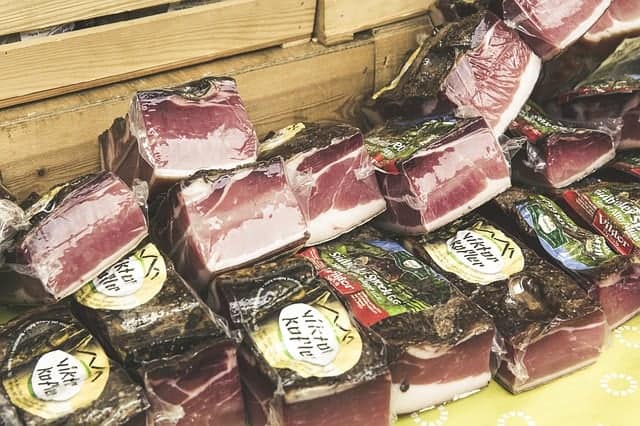
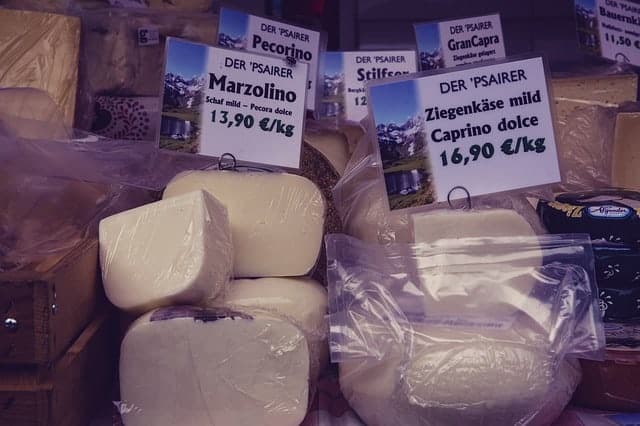
To drink, you can try a bombardino, which is a combination of ADVOCAAT (an alternative is eggnog) and brandy, all topped with whipped cream. They also have excellent hot chocolate made from Alpine milk or Italian wine.
Swimming in the Dolomites
Which lakes in the Dolomites are suitable for swimming? Take a look at our tips on where to go swimming in the Dolomites:
- Lago di Fié (Völser Weiher) – a small lake at Seiser Alm at an altitude of 1050 m, where you can rent boats, find a playground, refreshments or just stretch out and relax with a view of the Sciliar mountain range. You can stay right by the lake at the Waldsee Hotel.
- Lago di Issengo (Issinger Weiher) – although the lake is 1000 m above sea level, the water temperature reaches pleasant temperatures in summer. The ideal season for swimming is from June to mid-September. You can stay right on the lake at the Weiher Green Lake Hotel.
- Lago Grande di Monticolo (Großer Montiggler See) – the lake lies in a nature reserve at an altitude of 550 m. There are restaurants, hotels, a swimming pool and a beach volleyball court nearby. Not far from the lake is the slightly smaller Lago Piccolo di Monticolo (Kleiner Montiggler See), which is also suitable for swimming.
- Lago di Caldaro (Kalterer See) – probably the most popular lake in the area, located at thefoot of the Dolomites, surrounded by vineyards and orchards. It is also the hottest lake in the Alps, with water temperatures reaching a pleasant 28 °C in the summer months. It is a typical summer resort where you can find everything.
- Lago di Costalovara (Wolfsgrubnersee) – a lake which, despite its altitude of 1200 m, has a pleasant water temperature of around 23 °C in summer. The ideal months for swimming are early June to late August.
- Natural swimming pool Toblach Dobbiaco – you will find the natural swimming pool directly in the Toblach / Dobbiaco area. A plus point is the great view of the Val di Landro mountains. You can choose from a classic pool and a children’s pool. The swimming pool is fully equipped – changing rooms, toilets, bar, small football field, playground with swings and sandpit, fitness track, etc.
- Lago del Colle (Göllersee) – the last tip is a somewhat secluded lake, but it has a pleasant water temperature during the summer months. You can take a dip here after a walk from the village of Aldein. The journey will take 15 – 45 minutes depending on the route you choose. From the lake you can continue on to the viewpoint from Rotwand.
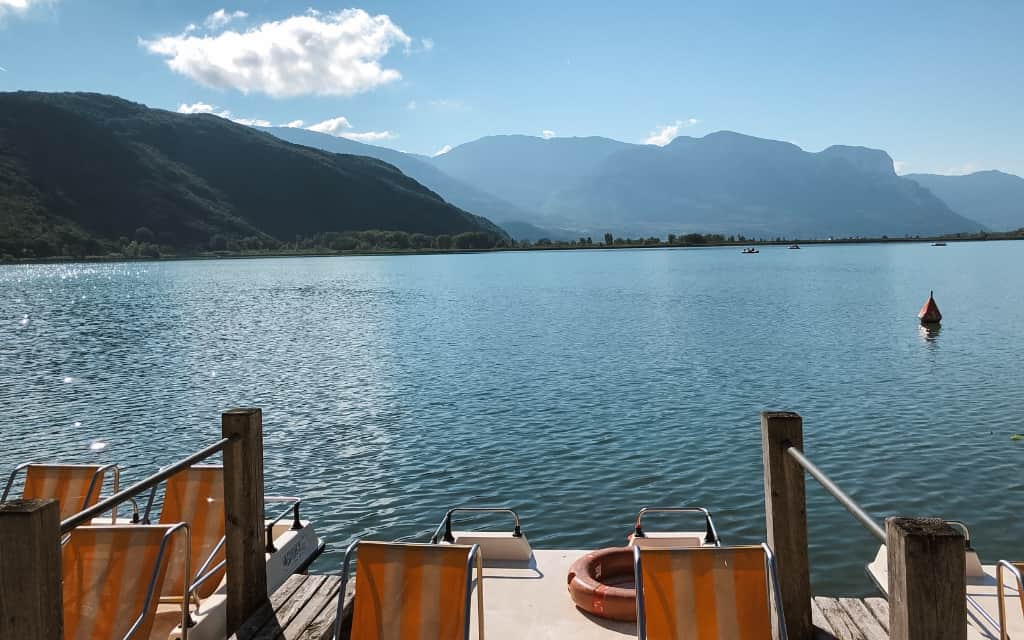
What to see in the Dolomites?
Top spots in the Dolomites include the iconic Tre Cime peaks, reached by a toll highway. There is an easy trail that leads around the peaks.
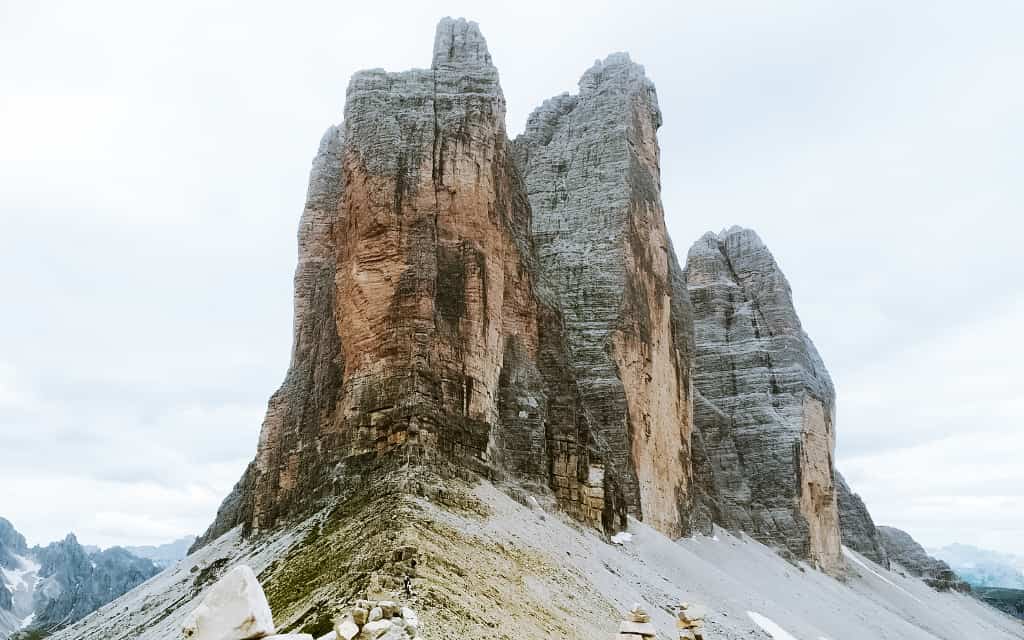
Most tourists also head for Lago di Braies near Tre Cime. A beautiful alpine lake nestled between limestone peaks, which is struggling with mass tourism. I recommend heading here early in the morning or later in the evening to avoid the worst crowds.
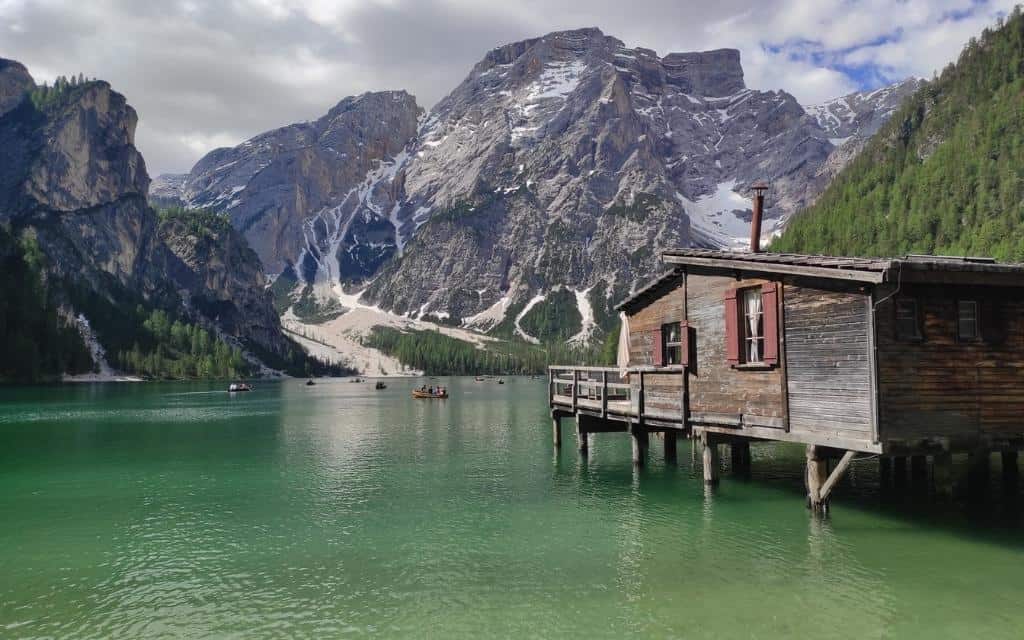
Other beautiful lakes are Lago di Carezza right by the road or Lago di Sorapis, where you will have a more challenging climb, but also the softest colour lake you have ever seen.
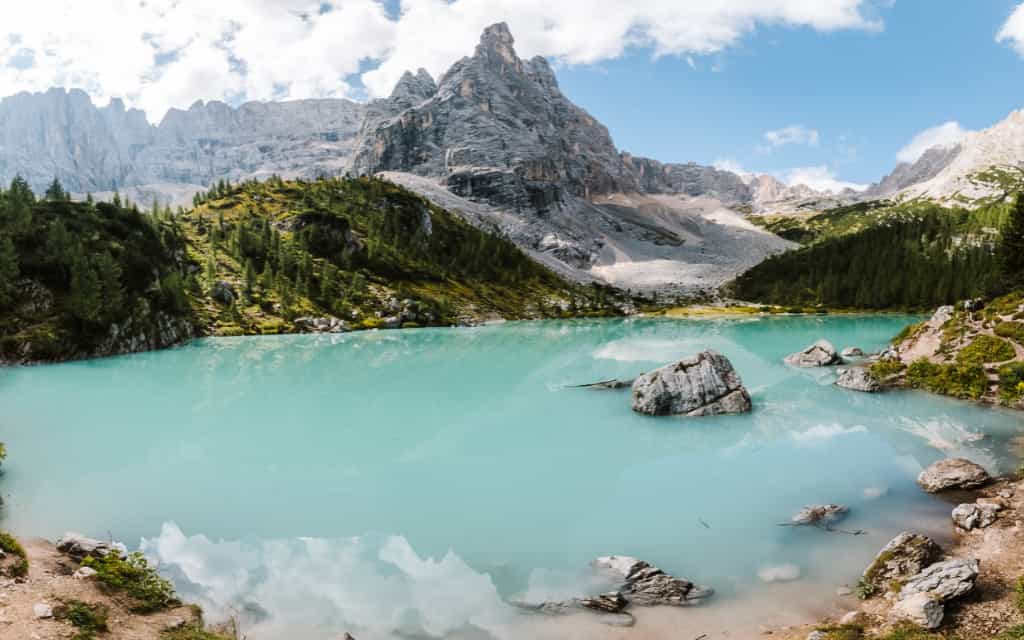
Take a drive through the mountain passes and enjoy the Dolomites landscape that is just a stone’s throw away. You can also hike one of the Dolomites’ hiking trails, enjoy the view from the cable car or try traditional cuisine in the rifugios.
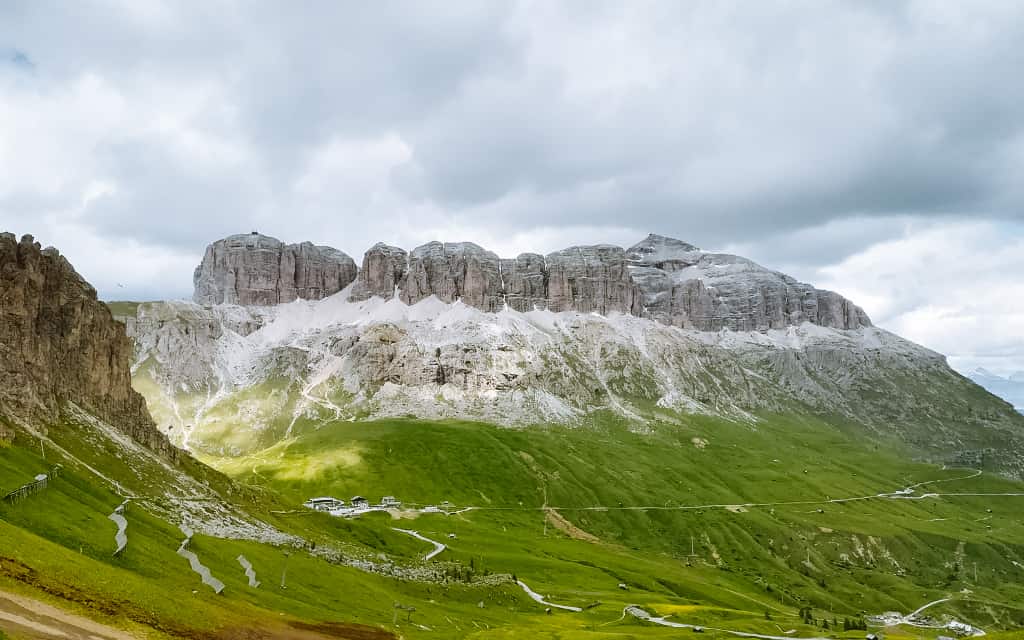
We’ve written a detailed guide with tips for hikes and walking routes in the Dolomites (Seceda, Val di Funes, Alpe di Siusi and many more) including a map and useful information.
Dolomites with children (easy routes in the Dolomites)
The Dolomites are full of easy hiking trails for families with children. Some trails are even passable with an all-terrain buggy.
1. Circuit around Tre Cime di Lavaredo
The circuit through the Dreizinnenhütte hut is 10 km long and will take you 4 hours, but slightly more active children can easily manage it. You can take the buggy to the Forcella Lavaredo saddle, which is about an hour from the car park.
The trail is panoramic from the start on a wide gravel path, so even if you don’t go far with the kids, you won’t be deprived of the views.
See all the information about Tre Cime in our previous article.
2. Mountain passes
Mountain passes are a great way to see a lot and not have to hike a lot. Ideal for a visit with children.
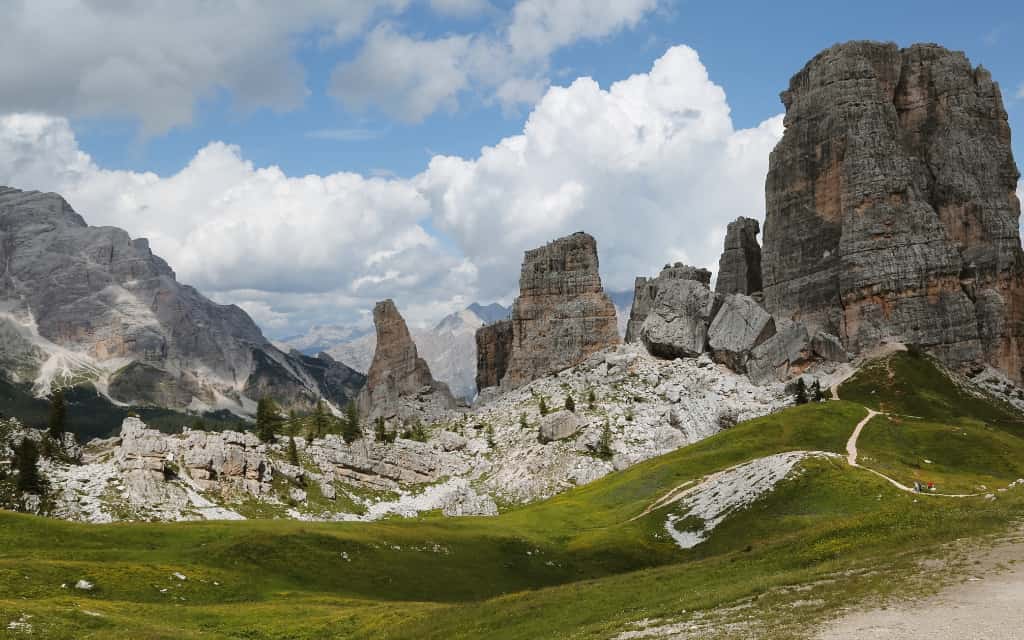
In each pass you will find refreshments and usually a cable car to one of the rock massifs. You can also choose from a number of hiking trails or just stroll through the Alpine meadows.
We have written detailed guides for several mountain passes in the Dolomites:
3. Lakes in the Dolomites
Lakes in the Dolomites are often easily accessible. You can visit Lago di Braies with children of any age. There is a 1.5-2 hour circuit around the lake. The western shore is steep and suitable for larger children. The eastern bank, on the other hand, leads along a wide path, which you can manage even with a stroller.
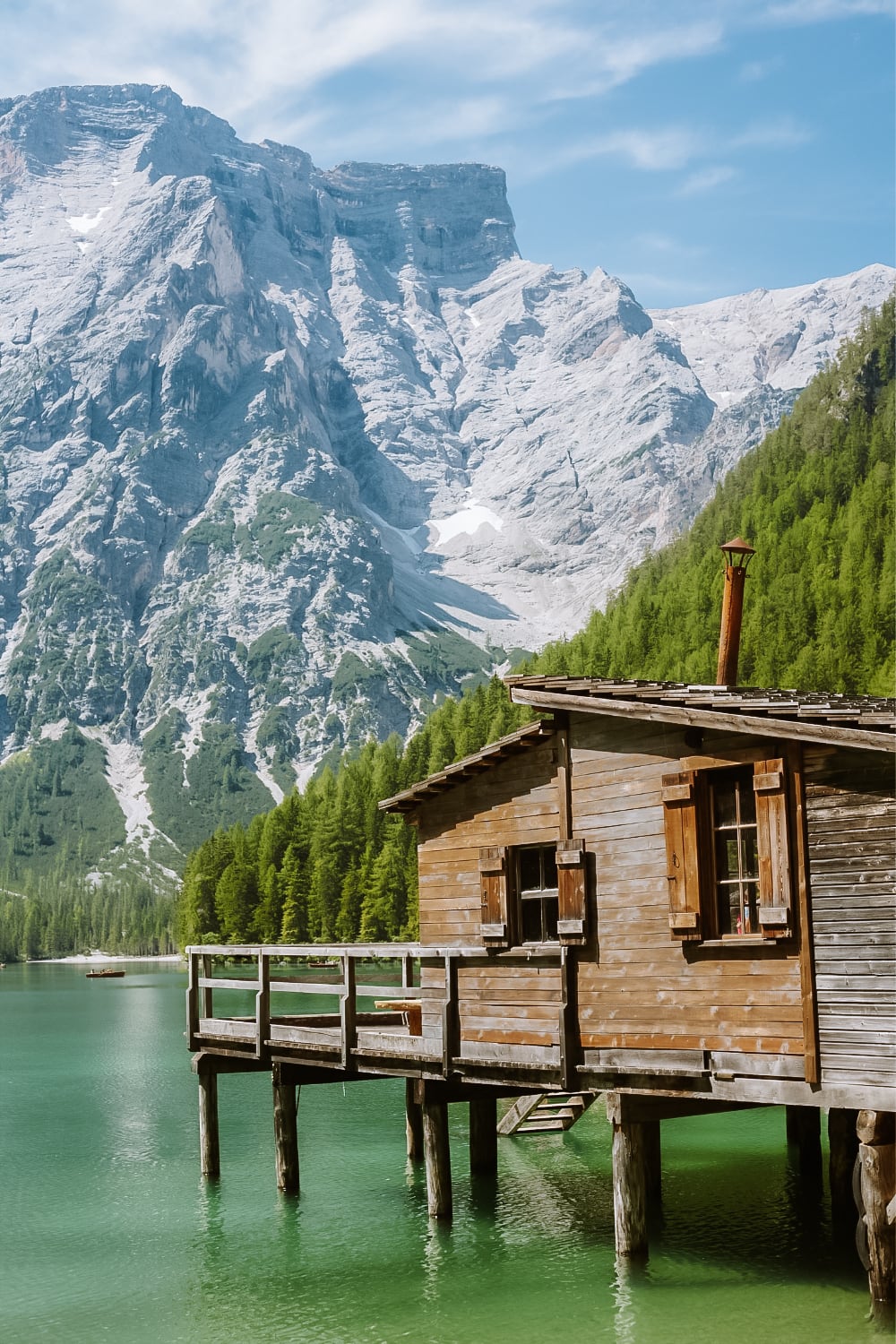
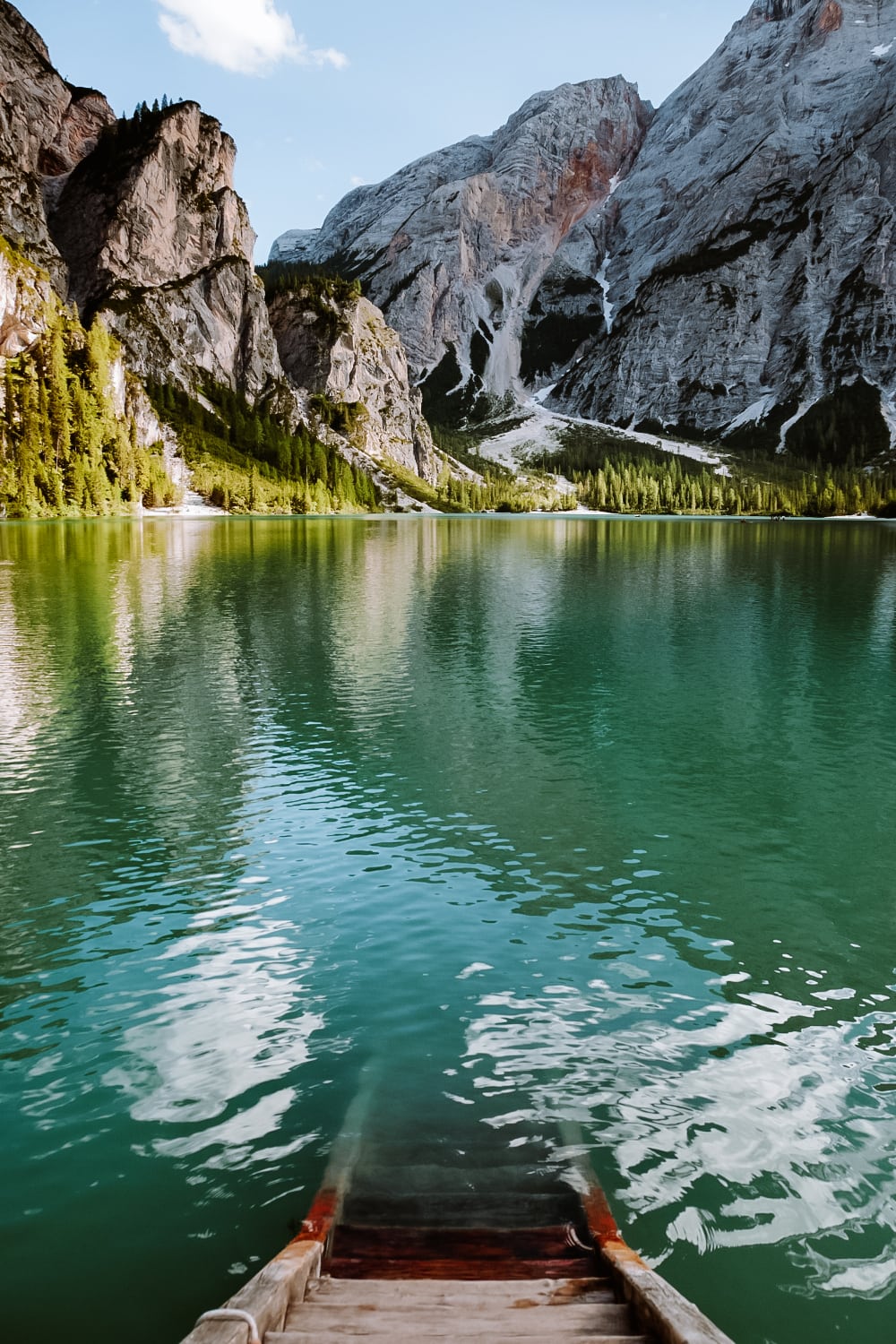
Lake Karersee or Toblachersee is also very accessible. It’s only a few steps from the parking lot. Other suitable candidates include Lago di Misurina and Lago d’Antorno.
4. Hiking route Alta via 1
The Alta via 1 is a 150 km long mountain route from Lago di Braies (eastern shore) to the town of Belluno. The path is marked by a blue triangle with a one inside. With the exception of the Marmol ferrata (the summit of Monte Schiara), this is a very accessible route that even older children can manage.
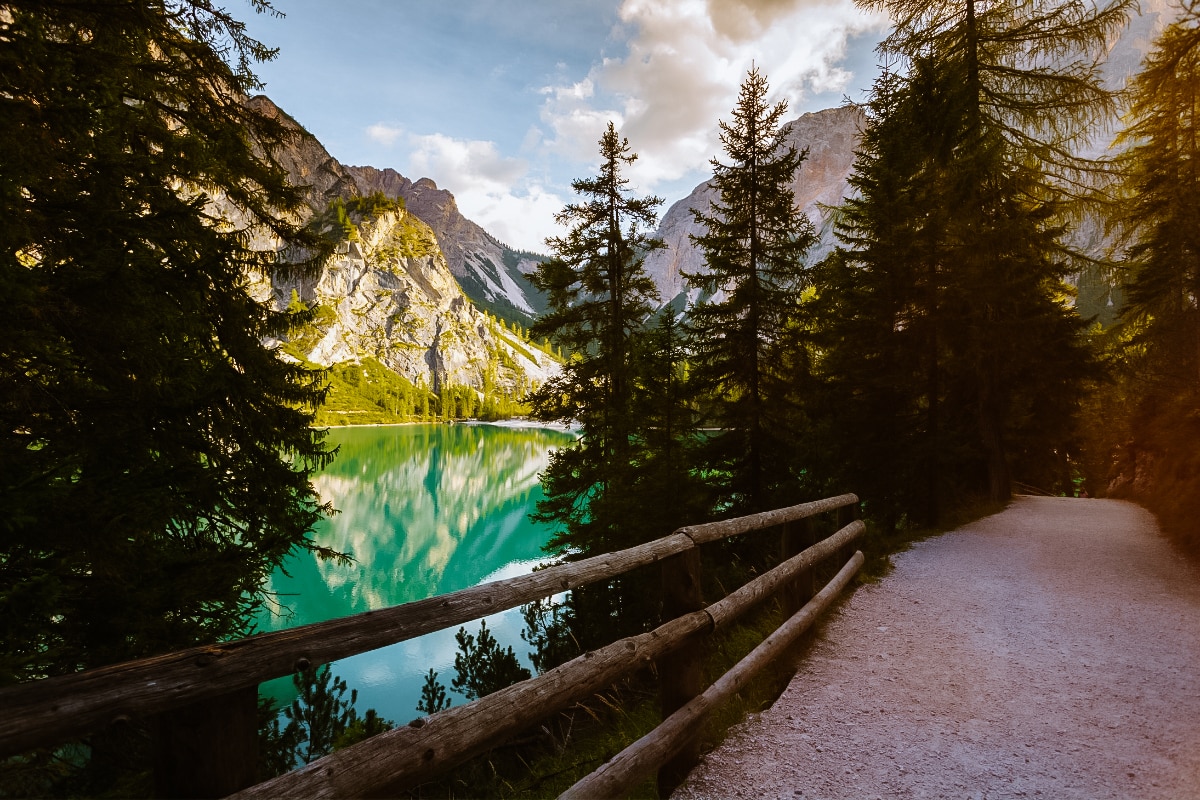
These were our tips and guides for Dolomites, Italy. Do you have a question? We’ll be happy to answer it in the comments below. What are you planning to visit in the Dolomites? Have a safe journey!
More information about Dolomites
DOLOMITES: We have prepared a detailed guide with tips on the best hikes and hiking routes in the Dolomites.
BEST PLACES IN THE DOLOMITES: Passo Pordoi is our favourite pass in the Dolomites. For tips on hiking routes in the Sassolungo area, see the article on Passo Sella.
Another beautiful pass is Passo Giau. No visit to the Dolomites is complete without Tre Cime and the iconic Lago di Braies. In separate guides you will find everything you need to know before visiting.
AUSTRALIAN ALPS: What to see in the Austrian Alps is covered in a separate article. Or head straight to Tyrol or the High Tauern National Park. Other popular destinations in the Austrian Alps are the Dachstein mountain range or the beautiful Lake Achensee.
